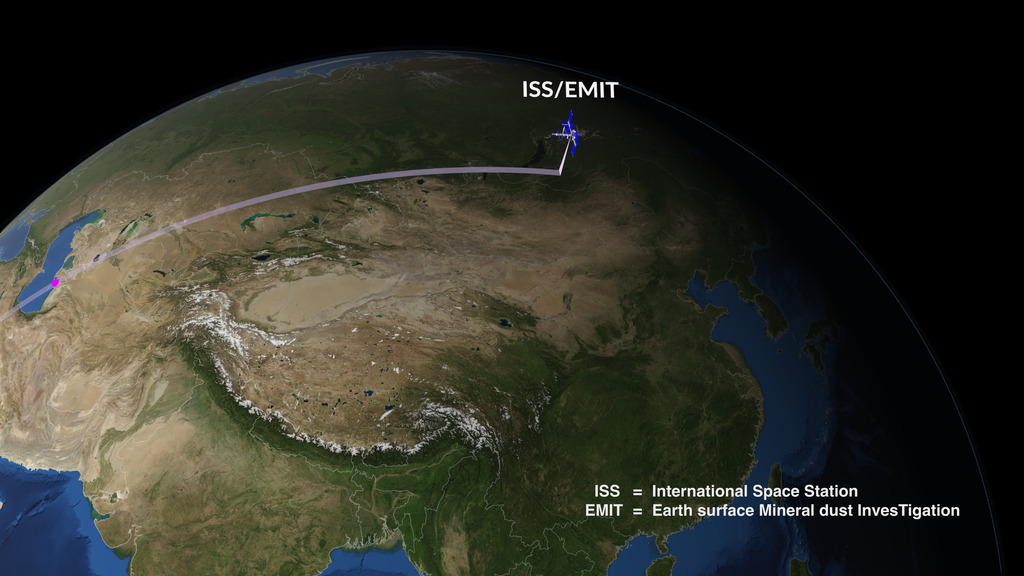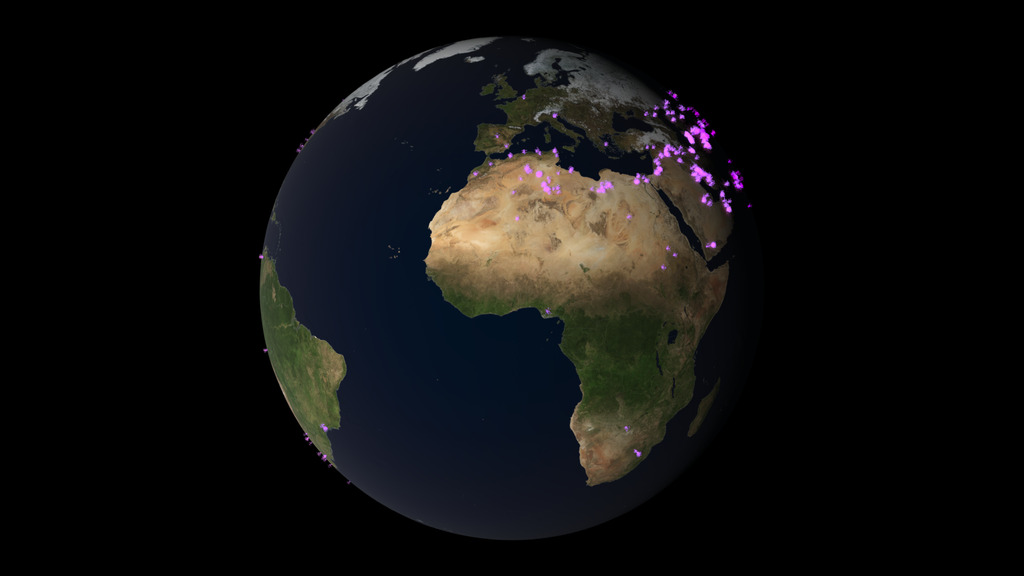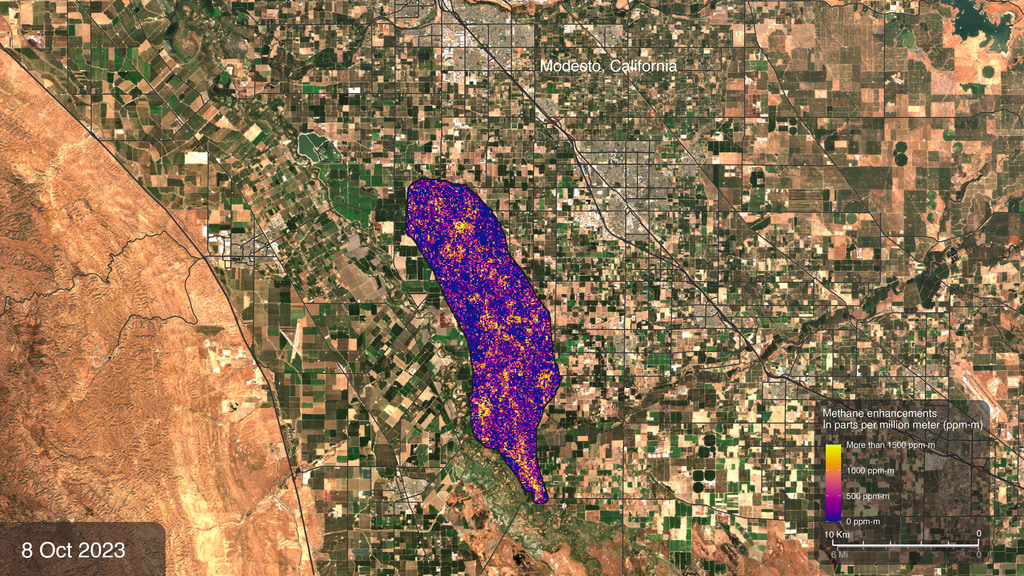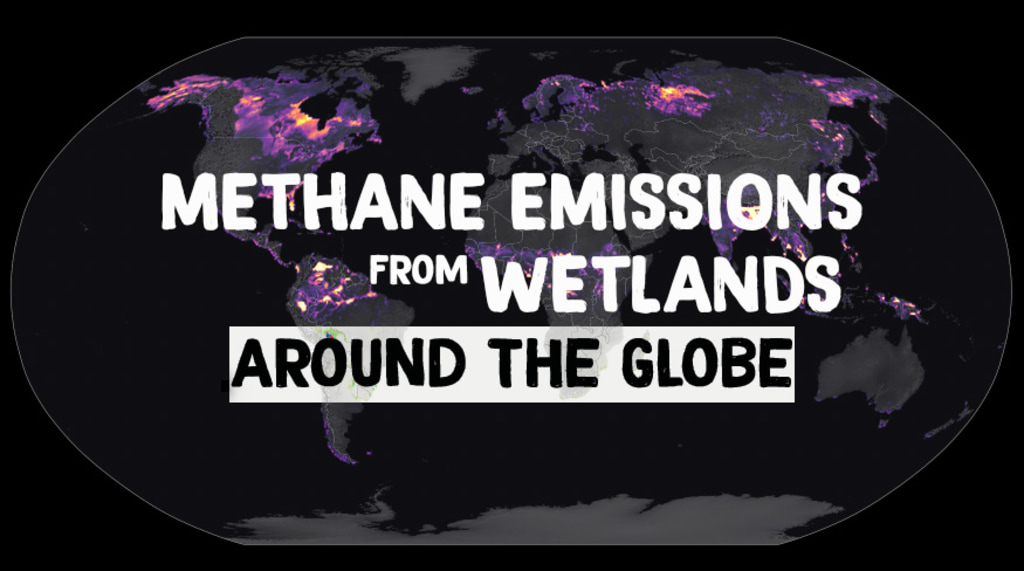EMIT Spots Methane Hotspots

A plume of methane is detected flowing from an area southeast of Carlsbad, New Mexico.
A plume of methane – a potent greenhouse gas about 80 times more effective at trapping heat in the atmosphere than carbon dioxide – is detected flowing from an area southeast of Carlsbad, New Mexico, in an image that uses data from NASA's Earth Surface Mineral Dust Source Investigation (EMIT) mission. The 2-mile (3.3-kilometer) long plume originates in an area known as the Permian Basin, which spans parts of southeastern New Mexico and western Texas and is one of the largest oilfields in the world.
EMIT uses an imaging spectrometer to detect the unique pattern of reflected and absorbed light – called a spectral fingerprint – from various materials on Earth's surface and in its atmosphere. Perched on the International Space Station, EMIT was originally intended to map the prevalence of minerals in Earth's arid regions, such as the deserts of Africa and Australia. Scientists verified that EMIT could also detect methane and carbon dioxide when they were checking the accuracy of the image spectrometer's mineral data.

An EMIT data cube and a line graph show methane's unique pattern of absorbed infrared light.

12 plumes of methane flow from oil and gas infrastructure east of Hazar, Turkmenistan.

A methane plume flows from a landfill south of Tehran, Iran.
For More Information
Credits
Please give credit for this item to:
NASA's Goddard Space Flight Center
-
Technical support
Release date
This page was originally published on Tuesday, November 1, 2022.
This page was last updated on Friday, December 13, 2024 at 12:28 AM EST.



